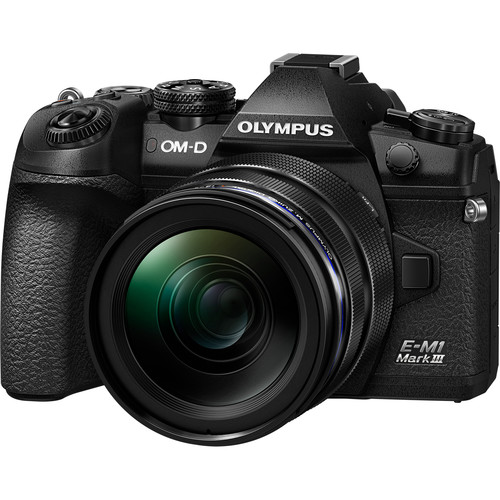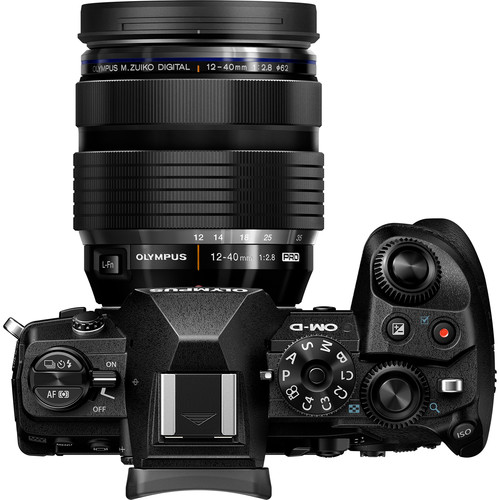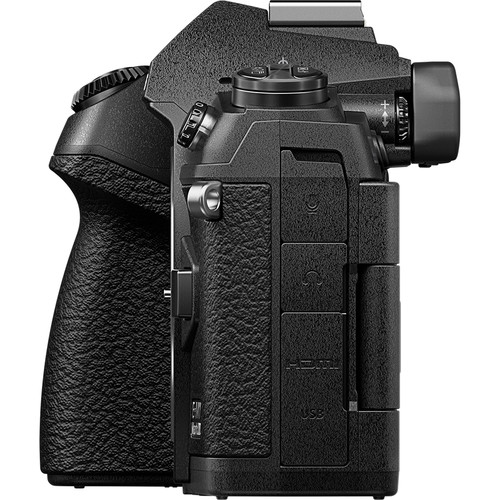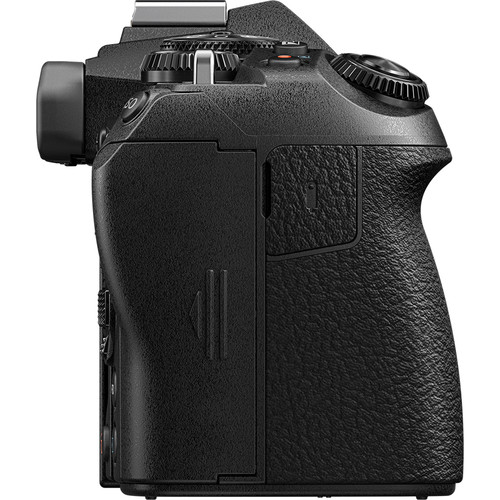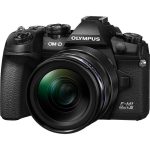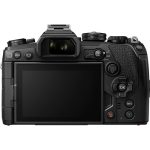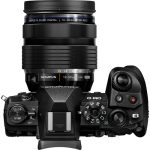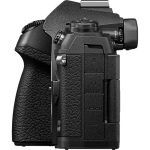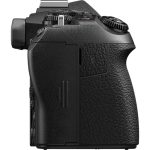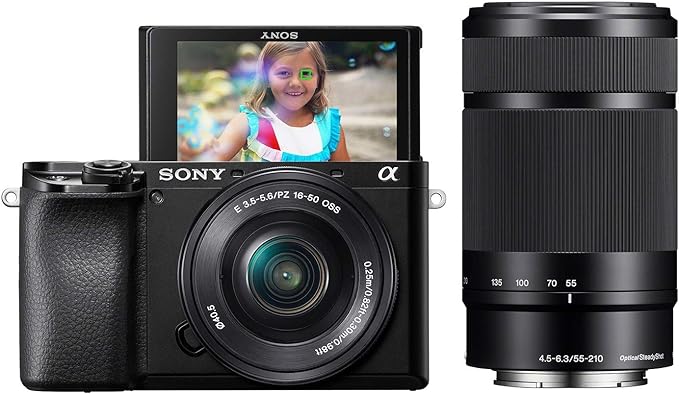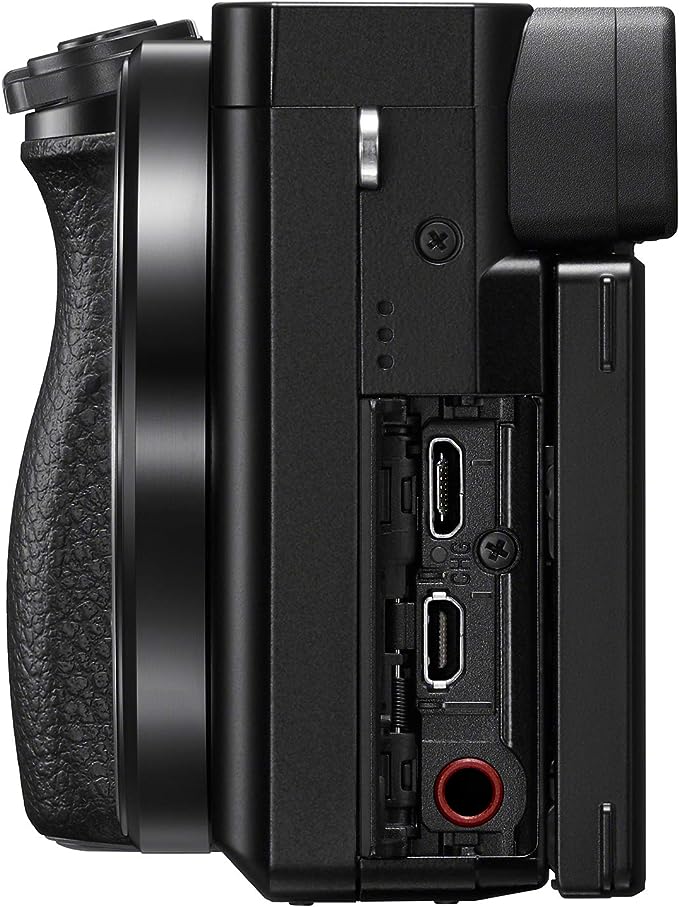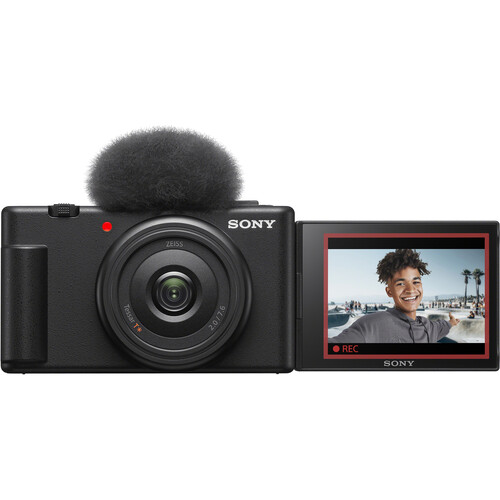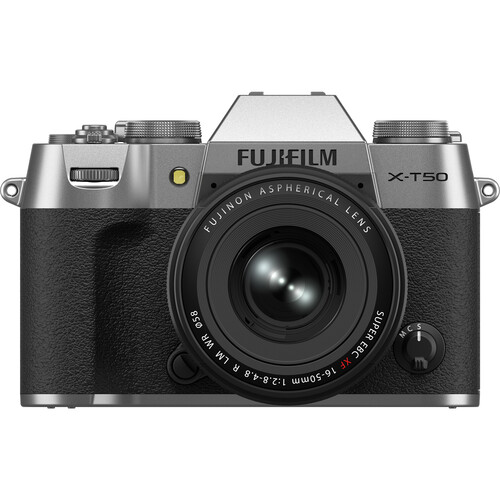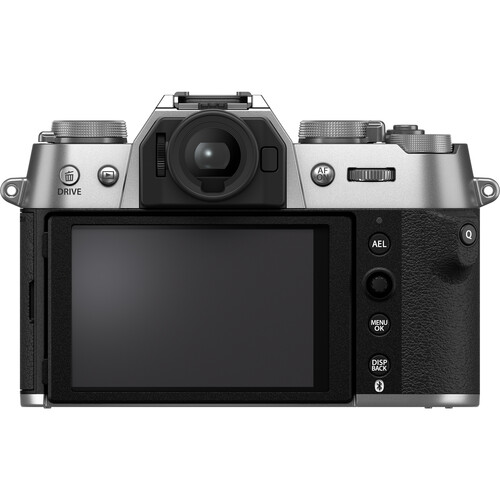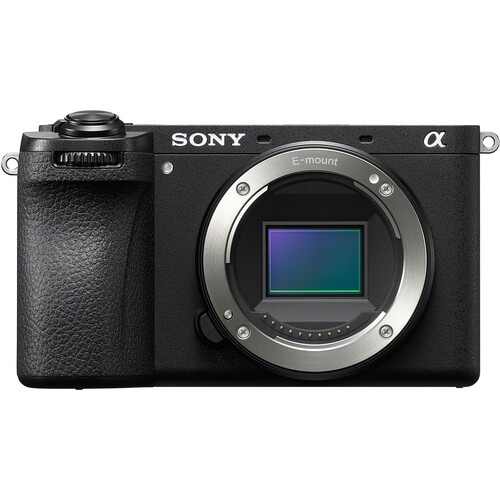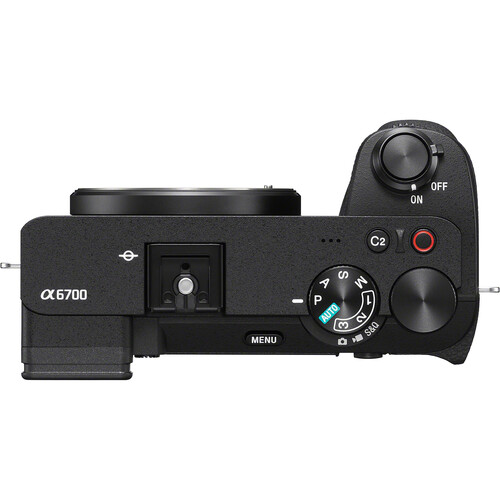Overview
The OM-D E-M1 Mark III is a compact and lightweight camera designed for professional photographers. Its rugged magnesium alloy body allows for superior mobility, while Olympus’ acclaimed weather-sealing ensures dust, splash, and freezeproofness. The camera also boasts the world’s best image stabilisation performance, with up to 7.5 EV steps of compensation, thanks to its new TruePic IX image processor.
Other notable features include a 20.4 MP Live MOS sensor with renowned SSWF technology for dust reduction, a 121-point all cross-type on-chip phase detection AF system, and improved ergonomics with a multi-selector for quickly shifting AF area. The camera also offers high-speed responsiveness and unique shooting features, making it a top choice for professional photographers in any shooting situation.
Summary
Native ISO: ISO 200
Lens Mount: MFT
Audio Inputs: 1 x 3.5mm Mic Input
Image Stabilisation: Yes
Battery Mount / Type: Olympus OM
Media Type: SD
Photo Resolution: 20.4 megapixels
Sensor: 4/3 Live MOS
Video Outputs: HDMI
Weight: 0-2kg
Wi-Fi: Yes
Included in box
1x Olympus E-M1 Mark III Camera Body
1x M.Zuiko Digital ED 12-100mm F4.0 PRO Lens
About the OM SYSTEM E-M1 MKIII w/12-100mm
OM-D E-M1 Mark III is a professional model which captures high quality images in a compact & lightweight system and enables shooting in any situation. This model is designed for professional photographers and is equipped with the world’s most effective image stabilisation which compensates up to 7.5 shutter speed steps*. Handheld High-Res shot delivers up to 50MP image quality in a portable body minimising stress on the photographer. The AF performance and high-speed burst speed made possible by the new AF algorithms and TruePicTM IX processor allow photographers to capture virtually any scene.
With the new OM-D E-M1 Mark III, pro photographers will experience virtually no limits in any shooting situation
High image quality fostered by the world’s best image stabilisation and a new image processor in a compact body
Being exceptionally compact and lightweight, the overall E-M1 Mark III system (including any M.Zuiko lens) maintains superb mobility while offering high image quality and performance.
When synchronising the in-lens image stabilisation of supported lenses2 with the in-body 5-axis image stabilisation, the E-M1 Mark III achieves the world’s best stabilisation performance of 7.5 shutter speed steps of compensation with 5-axis sync IS. This level of stabilisation enables shooting in dark locations and during super-telephoto photography without a tripod, opening up new possibilities for photographers and filmmakers. Without sync IS, the in-body image stabilisation ensures image stabilisation with any attached Micro Four Thirds lens of up to 7.0 shutter speed steps compensation3.
In combination with the new image processing engine TruePic IX, a 20.4 Megapixel Live MOS sensor, and an extensive line-up of high-resolution M.Zuiko lenses, the 5-axis IS ensures minimal noise even at high-sensitivity settings and top-class image quality with minimal distortion up to the edges of the shot.
For users in need of higher resolutions, the 50MP Handheld High Res Shot feature makes it possible to capture approximately 50 Megapixel high-resolution images without using a tripod. The Tripod High Res Shot function allows for recording ultra high-resolution (approx. 80 Megapixel equivalent) RAW and JPEG images.
Live ND, which was very popular on the OM-D E-M1X, is also included in this model. Users can select the effect level from ND2 (one step) to ND32 (5 steps), and check the slow shutter effects in the viewfinder before capturing.
Weather-sealing and acclaimed Olympus technologies ensure absolute reliability
The rugged magnesium alloy body of the OM-D E-M1 Mark III features Olympus’ acclaimed dust-, splash- and freezeproof design to allow for shooting in any location and environment.
The lithium-ion battery BLH-1 can be fully charged in as little as two hours when installed in the camera and attached to a power source via USB4. The E-M1 Mark III is compatible with the USB PD (USB Power Delivery) standard to run the camera with energy supply from an external power bank, making it possible to shoot for long periods of time – especially convenient for astrophotography or photography in cold environments.
With Olympus’ advanced SSWF (Super Sonic Wave Filter) technology (which vibrates the image sensor filter with an acceleration of several thousand G5 30,000 times per second to powerfully shake off dust and dirt) and a new sensor coating introduced with the OM-D E-M1X, dirt cannot stick to the sensor, reducing spots in images to 1/10th of that in conventional models. The high-durability shutter unit in the E-M1 Mark III clears 400,000 operation tests6 and therefore offers a high level of reliability.
High-speed, high-precision autofocus capabilities with innovative Starry Sky AF and Advanced Face Priority / Eye Priority AF
The OM-D E-M1 Mark III is equipped with a 121-point all cross-type On-chip Phase Detection AF sensor for focusing on various areas of the screen. It offers 75% vertical coverage and 80% horizontal coverage of the screen for a wide focusing area. Paired with an advanced AF algorithm, this feature can continually focus on fast-moving subjects with a high degree of precision. Unlike DSLR cameras, there is no degradation in AF precision when using a fast lens. The E-M1 Mark III offers high-precision focusing that can sufficiently bring out the capabilities even of large-diameter lenses such as those with a maximum aperture of f1.2.
AF/AE tracking is possible at maximum 18 fps high-speed sequential shooting while maintaining the full pixel count of 20.4 Megapixels. The subject can also be checked in the viewfinder during high-speed sequential shooting for accurate tracking.
A multi selector (as introduced with the E-M1X) makes it possible to quickly shift AF areas with your thumb while looking through the viewfinder. Because users can move the AF areas with the multi selector during sequential shooting, it is possible to accurately focus even on subjects that move erratically, as e.g. often found in wildlife photography. The AF target loop setting is also added, which, based on user selection, either stops the AF target at the edge of the screen or moves it to the opposite edge.
Face Priority / Eye Priority AF, which automatically detects and focuses on people’s faces and eyes, is now more advanced. The new image processor TruePic IX features higher processing capabilities and improved AF algorithms to better detect small faces and eyes, whilst keeping stable focusing on a subject even in situations where face detection was difficult in the past (such as e.g. focusing on the sides of faces). It is now also possible to use either the buttons or touch operations to select faces when shooting still images or videos, and detection on or off can be changed with the touch of a single button. Along with versatile video functions, this feature makes the E-M1 Mark III a great tool for vloggers.
Starry Sky AF, which is new for the OM-D E-M1 Mark III, is a feature that will revolutionise the world of astrophotography. In the past, photographers have traditionally relied on manual focusing. A new algorithm was developed to enable accurate focusing even on the tiniest stars shining in the night sky, enabling ultra high-precision autofocusing. One of two modes in Starry Sky AF is the Speed Priority mode (default setting), which prioritises focusing speed and complete AF operations in a short period of time. Thanks to the powerful image stabilisation, this feature makes handheld astrophotography possible using a wide angle lens. The second mode Accuracy Priority uses a fine-tuned focus scan and is effective for shooting specific stars with telephoto lenses.
Equipped with versatile shooting features such as Pro Capture and handheld 4K video fueling your creativity
Pro Capture mode makes it possible to capture scenes that are difficult to time for the photographer, such as a bird taking flight. Pro Capture starts shooting the moment the shutter release button is pressed down halfway, with a buffer that can be set to capture up to 35 frames in RAW / full resolution. The moment the button is pressed down fully, the frames are available to select from retroactively on top of the images recorded while pressing the button.
The OM-D E-M1 Mark III is equipped with Live Composite, which overlaps multiple shots recorded at the same shutter speed and composites only the sections that are brighter for capturing light trails. This feature helps prevent the common phenomenon of images that are too bright when shooting long exposures. Users can check the progress of light trails in real-time using Live View. With B mode added to the shooting mode dial, Live Composite, Live Bulb, and Live Time are now easier to access and configure.
The E-M1 Mark III features an IS mode specifically designed for video recording. Electronic stabilisation combined with in-body 5-axis stabilisation delivers powerful image stabilisation particularly useful for videographers. This provides a high level of performance for handheld video content creation without using a tripod or other stabilising device, even when shooting in high-resolution formats, which are susceptible to the effects of camera shake, such as 4K or Cinema 4K (C4K).
This model supports OM-Log400 shooting, which enables shooting without loss of details in shadows and highlights, along with colour grading for a high degree of freedom over images. In order to make Live View images more visible, a View Assist function is available, which converts the colour gamut to Full HD standard BT.709 equivalent for display.
Pairing the high-res Olympus audio recorder LS-P4 with an external mic/recorder enables more versatile recording of high-quality audio for videos. This setup supports high-quality sound recording for video production, such as placing the LS-P4 near the subject, or switching the mic direction and zooming in on the sound source.
With the new firmware Version 1.10 for the LS-P4, being released at the same time as the OM-D E-M1 Mark III, Slate Tone function, which is useful for editing sound files and Test Tone will also support adjusting the recording level.
Olympus applications and software for more convenient shooting and perfect data managementThe OI.Share smartphone app can be used to connect to the camera via Wi-Fi, import shooting data to a smartphone, and to use the smartphone for remote camera operation. OI.Share can now also be used to update the camera firmware and backup and restore camera settings for the OM-DE-M1 Mark III.
Olympus Workspace can handle professional tasks such as RAW processing and image editing, along with offering a great deal of freedom over screen layout, etc. Connect a computer to the OM-D E-M1 Mark III via USB to enable high-speed RAW processing with Olympus Workspace using the new image processor TruePic IX. Clarity and Dehaze editing filters are included for a greater range of expression in astrophotography, etc.
By using Olympus Workspace Version 1.3, being released at the same time as the OM-D E-M1 Mark III, it makes it easy to replace the audio files of the recorded video to High res sound recorded by using Slate Tone on the LS-P4 / LS-100 while recording video.
This control software for computers meets the demands of studio photography. When using the software, live shooting results can be imported via Wi-Fi without using a USB connection, providing powerful support for the workflow of studio shooting. It supports high-speed 5 GHz band communication.
Type
Body material Magnesium alloy body
Lens mount Micro Four Thirds
Image Sensor
Type 4/3″ Live MOS sensor
Effective pixels 20.4 Megapixels
Engine
Type TruePic IX
Filter
Dust reduction filter Supersonic Wave Filter
Viewfinder
Type Electronical Viewfinder
Pixel number 2,360 K dots
Diopter adjustment Equipped -4.0 – +2.0 diopters / built-in type
Field of view Approx. 100%
Magnification Max. 1.48 x with a 50mm lens set to infinity at -1 dioptre (depending on selected viewfinder style)
Eye point 21 mm at -1 dioptre from eyepiece lens
Style 3 styles selectable
Brightness adjustment Adaptive Brightness Technology / Manual settings: +/- 7 levels
Correction of colour temperature +/- 7 levels
S-OVF Expands the Live View dynamic range
*Available in the EVF when in P, A, S, M and B modes. Art filter, WB and exposure are not reflected in EVF.
Live View
Displayed information Aperture, Shutter speed, Auto bracket, AE lock, Focus mode, Shooting mode, Battery check, IS activating mode, Face / Eye detection mode, Record mode, ISO, Sequential shooting mode , White Balance, Metering mode, Exposure compensation value, AF frame display, AF confirmation mark, Shooting information, Spot metering area, Super FP, Flash status, Touch Panel Condition, Focal length, Flash mode, Histogram, Level Gauge, Highlight & Shadow, Focus peaking, Number of storable pictures, Custom, Face detection, Flash intensity, WiFi
Field of view Approx. 100%
Magnification levels 3 / 5 / 7 / 10 / 14 x
Dynamic range expansion When in HDR1 or HDR2
Display modes Comparison, Grid (4 types), Grid, Histogram, Level Gauge, Magnified View, Standard information, Off
Image Stabiliser
Type Sensor shift
Modes Five-dimensional, vertical or horizontal activation, automatic
Effective Compensation Range Up to 7.0 EV steps*
Up to 7.5 EV steps**
Based on CIPA measurement conditions
*When using M.Zuiko Digital ED 12-40mm f/2.8 PRO (focal length =40mm
(35mm equivalent: 80mm))
**When using M.Zuiko Digital ED 12-100mm F4 PRO (focal length =100mm
(35mm equivalent: 200mm)), halfway release image stabilisation Off, Frame rate: High
Live View stabilisation Available
Focusing System
Method TTL phase difference detection system, contrast detection system
Focus areas 121 points / cross-type phase detection AF
121 points / contrast AF
All target, single target (normal / small), group target (5-area / 9-area / 25-area), custom target 1-4 (AF area and its increment steps selectable)
AF working range -6 – 20 EV (ISO approx.100, with a f/1.2 lens)
AF lock Available, Locked by first position of shutter release button in single AF mode, AE/AF lock button (customised)
Modes Manual focus, Preset MF**, Single AF*, Continuous AF*, AF* Tracking, Stacking, Bracketing
* incl. manual override
** Distance setting values are rough estimates and only AF lenses can be used.
AF illuminator Equipped
Manual focus Available, With enlarged focusing area or focus peaking
Face Detection extension Eye Detect AF: Off, Left side priority, Near side priority, Right side priority
Predictive AF Available
AF tracking Available, Available in continuous AF mode
Focus peaking
Colour selection White, black, red, yellow
Intensity High / Normal / Low
Back light effect On / Off
Focus Bracketing Mode
Number of images 3 – 999 shots
Step size 10 levels
Compatible with: All Micro Four Thirds AF lenses
Focus Stacking Mode
Technology 3-15 images are taken at different focus points and automatically composited together into a single image
Compatible with: M.Zuiko Digital ED 60mm F2.8 Macro, M.Zuiko Digital ED 30mm F3.5 Macro, M.Zuiko Digital ED 7-14mm F2.8 PRO, M.Zuiko Digital ED 12-40mm F2.8 PRO, M.Zuiko Digital ED 12-45mm F4 PRO, M.Zuiko Digital ED 12-100mm F4 IS PRO, M.Zuiko Digital ED 40-150mm F2.8 PRO, M.Zuiko Digital ED 8mm F1.8 Fisheye PRO, M.Zuiko Digital ED 300mm F4 PRO
M.Zuiko Digital 1.4x Teleconverter MC-14, M.Zuiko Digital 2x Teleconverter MC-20
Angle of view becomes slightly smaller
AF targeting pad Available (activate/deactivate with double tap on rear monitor)
Exposure System
Modes Programme automatic, Aperture priority, Shutter priority, Manual, Bulb, Time, Movie, HDR, My Mode, Custom shooting, Custom 1, Custom 2
Exposure compensation +/- 5 EV ( 1, 1/2, 1/3 steps )
Note: Monitor and EVF displays only up to ±3 EV.
Exposure bracketing 2 / 3 / 5 frames ( +/- 1/3, 2/3, 1 EV steps )
7 frames ( +/- 1/3, 1/2, 2/3 EV steps )
ISO bracketing 3 frames ( 1/3, 1/2, 1 EV steps )
AE lock Available
My Mode 4 settings storable
Enhancement function Digital Shift (horizontal and vertical compensation can be performed simultaneously)
Shadow Adjustment Technology
Flicker Scan: Available for M, S and silent mode (can be confirmed in Live View)
HDR bracketing 3 / 5 frames ( +/- 2 / 3 EV steps )
7 frames ( +/- 2 EV steps )
Multi-Exposure
Max. number of frames 2 frames (shooting)
3 frames (editing)
Auto gain control Available
Frame assistance Live View
Light Metering
Method TTL open aperture light metering
Zones 324 zones Multi-pattern Sensing System
Detection range -2 – 20 EV (17mm f2.8, ISO 100)
Modes ESP light metering, Spot metering, Centre weighted metering, Highlight, Shadow
Art Filter
Modes Pop Art, Soft Focus, Pale & Light Colour, Light Tone, Grainy Film, Pin Hole, Diorama, Cross Process, Dramatic Tone, Gentle Sepia, Key Line, Water colour, Vintage, Partial Colour*, Bleach Bypass
Variation / Effect Available
Art Filter bracketing Art Filters selectable
Sensitivity
Auto (customisable, default ISO LOW – 6400)
Manual ISO LOW – 25600 in 1/3 or 1 EV ISO steps
Shutter
Shutter type Computerised focal-plane shutter
Self timer 2 s / 12 s / Custom
Durability 400,000 shots
Shutter Speeds
Shutter speed range 1/8000 – 60 s (in 1/3, 1/2, 1 EV steps)
Bulb mode Up to 30 minutes (selectable longest time in the menu, default: 8 minutes)
High res shot
Shutter type Electronic shutter
Shutter speed 1/8000 – 60 s
Start delay 0, 1/8, 1/4, 1/2, 1, 2, 4, 8, 15. 30 s
Resolution JPEG: 10368×7776 / 8160 x 6120 / 5760 x 4320
RAW: 10368 x 7776
Equivalent to 80M / 50M / 25M pixel sensor (8 shots combined into a single JPEG using sensor shift)
Available in P/A/S/M mode
Handheld High res shot
Shutter type Electronic shutter
Shutter speed 1/8000 – 60 s
Resolution JPEG: 8160 x 6120 / 5760 x 4320
RAW: 8160 x 6120
Equivalent to 50M / 25M pixel sensor (8 shots combined into a single JPEG using sensor shift)
Available in P/A/S/M mode
Flash can not be used
Anti shock mode
Shutter type Electronic first curtain shutter
Shutter speed 1/320* – 60 s
Start delay 0, 1/8, 1/4, 1/2, 1, 2, 4, 8, 15, 30 s
* For speeds over 1/320 sec., mechanical shutter will automatically be selected.
Silent mode
Shutter type Electronic shutter
Shutter speed 1/32000 – 60 s
Start delay 0, 1/8, 1/4, 1/2, 1, 2, 4, 8, 15. 30 s
Flicker Scan
Stills 1/7634 – 1/50 s
Movies 1/250 – 1/30 s *
* Frame rates greater 30fps are limited to their reciprocal value
White Balance
AUTO WB system Advanced detection system with Live MOS sensor
Manual White balance (One-Touch) Available
White balance bracketing 3 frames / +/- 2, 4, 6 mired steps
One-touch white balance 4 custom settings can be registered
Custom WB 1 setting can be registered at Kelvin temperature (2000K – 14000K)
Preset values Tungsten, Flourescent 1, Sunlight, Flash, Overcast, Shade, Underwater
Auto Flash adjustment Off / Auto WB / Flash
Keep warm colour On / Off
Sequence Shooting
Speed (H) Approx. 15 fps
Max. number of frames: RAW 101 / JPG (LF): 134
Speed (L) 10 fps
Max. number of frames: RAW 286 / JPG (LF): Up to card capacity
Silent mode
Speed (H) Approx. 60 fps
Max. number of frames: RAW 50 / JPG (LF): 50
Speed (L) Approx. 18 fps
Max. number of frames: RAW 76 / JPG (LF): 90
Pro Capture mode
Speed (H) Approx. 60 fps
Speed (L) Approx. 18 fps
Pre-shutter Frames 0 – 35 frames (recorded by half release prior to full release)
Frame count limiter 1 – 99 frames / Off (unlimited frames) (incl. pre-shutter frames)
Conditions Memory card: TOSHIBA SDHC UHS-II R95 W90 EXCERIA™
Sequence Shooting
When using the M.Zuiko Digital ED 12-40mm F2.8 Pro Maximum sequential shooting speed may be affected by several factors including lens used, brightness, aperture, shutter speed, and ISO setting.
When ISO is 8000 or above, 30 fps becomes the maximum sequential shooting speed. The actual shooting speed may become slower than the set shooting speed by a few frames per second. When using ISO Bracketing, performance will be affected at ISO 2000 or above.
Image Processing
Colour space sRGB / AdobeRGB
Sharpness + Contrast 5 levels
Contrast 5 levels
Saturation 5 levels
Black & White filter Yellow, Orange, Red, Green
Black & White toning Sepia, Blue, Purple or Green in Black & White mode
Picture mode i-Enhance, Vivid, Natural, Portrait, Muted, Monotone, Art Filter, Custom
Gradation 4 levels (auto, high key, normal, low key)
Engine TruePic IX
Art Filter bracketing Available
Tele converter effect 2 x
Fisheye compensation Available when M.Zuiko Digital ED 8mm Fisheye PRO is attached
Angle of view adjustable in 3 levels
Compensation automatically ON when using Underwater Modes, available
(can be confirmed in Live View)
External Flash Control
X-sync speed 1/250 s / 1/8000 s (Super FP Mode)
Type TTL AUTO, AUTO, MANUAL, FP TTL AUTO, FP MANUAL
Compatible external flash FL-14, FL-20, FL-36R, FL-50R, FL-300R, FL-600R, FL700WR, FL-900R, STF-8
Modes Auto, Red-eye reduction, Slow synchronisation, 2nd curtain and slow synchronisation, Fill-in for exclusive flash, Manual
Intensity +/- 3 EV ( 1/3, 1/2, 1 EV steps )
Note: Some functions are only available if they are supported by the external flash.
Wireless Flash Control
Number of channels 4 channels
Compatible external flash FL-36R, FL-50R, FL-300R, FL-600R, FL-700WR, FL900R, STF-8
Control method Triggered and controlled by bundled flash
Group setting 4 groups
Available when used together with cameras compatible with the Olympus wireless RC flash system.
Monitor
Monitor type Vari-angle LCD – Touch Panel
Monitor size 7.6 cm / 3.0‘‘ (3:2)
Resolution 1,037 K dots
Brightness adjustment +/- 7 levels
Colour balance +/- 7 levels
Touch Control functions AF area enlargement, AF area selection, Art Filter, Enlargement, Enlargement playback, Frame forward/backward, Live Guide, Scene Modes, Shooting mode, Shutter release, Super Control Panel, Wifi connection
Level Gauge
Detection 2-axis
Display Rear display and viewfinder
Super Control Panel
Displayed information Battery indicator, Record mode, Shutter speed, Aperture value, Exposure compensation indicator, ISO, AE bracketing, AF frame, Focus mode, AEL notification, Face detection, Number of storable frames, Metering mode, Exposure mode, Exposure level view, Flash compensation value, Colour space, Gradation, Colour saturation compensation value, Sharpness compensation value, Contrast compensation value, White balance, White balance compensation value, Noise reduction, Flash mode, Drive mode, Internal temperature warning, Histogram
Recording Formats
RAW 12 bit
RAW & JPEG Applied parallel recording
JPEG Applied
Aspect ratio 4:3 / 3:2 / 16:9 / 6:6 / 3:4
Image Size
RAW 5184 x 3888 compressed
5184 x 3888 Fine (compression: 1/4)
Still Image Recording
EXIF 2.31
DCF Applied
RAW Applied
Dual SD card settings Standard, Auto Switch, Dual Independent, Dual Same
When two cards are inserted, card to be saved on to or to be viewed can be designated.
Movie Recording System
Recording format MOV(MPEG-4AVC/H.264)
Picture mode Flat, OM-Log400 (View assist compatible)
Movie Recording System
Time code Rec run / Free run
Drop frame / Non-drop frame
Image Stabilisation Mode Applied Sensor shift
M-IS1 (Image sensor shift and electronic image stabiliser with multi motion IS)
M-IS2 (Image sensor shift with multi motion IS)
4K Movie quality 4096 x 2160 (C4K) / 24p / IPB (approx. 237 Mbps)
3840 x 2160 (4K) / 30p, 25p, 24p / IPB (approx. 102 Mbps)
HD Movie quality Full HD 1920 x 1080 (16:9) / 30p, 25p, 24p / ALL-I (A-I), IPB (SF, F, N) (MOV)
Full HD 1920 x 1080 (16:9) / 60p, 50p / IPB (SF, F, N) (MOV)
HD 1280 x 720 (16:9) / 60p, 50p, 30p, 25p, 24p / ALL-I (A-I), IPB (SF, F, N)
ALL-I: ~ 202 Mbps
FullHD IPB (SF: ~52Mbps, F: ~30Mbps)
HD IPB (SF: ~26Mbps, F: ~14Mbps, N: ~10Mbps)
HD 1280 x 720 (16:9) / 30p
Movie quality 640 x 480 / 30p (AVI Motion JPEG®)
Maximum Recording Time 29 min (MOV)
Max. file size 4 GB (AVCHD)
Exposure Modes Aperture priority, Manual, Programme automatic, Shutter priority
* Frame rate may drop when using certain art filter
Class 10 or higher SD card is recommended for movie shooting
UHS-II or UHS-I U3 card is recommended for ALL-I shooting
Movie Specialties
High-Speed Recording 1920×1080 (MOV) / 120fps
Time lapse 4k, 1080p, 720p (AVI Motion JPEG®)
Fast motion Available
Slow motion Available
Movie clips 1, 2, 4, 8 s
(Extension up to 16s by pressing record button before clip ends.)
Movie effects
Art Filter Cross Process, Diorama, Dramatic Tone, Gentle Sepia, Grainy Film, Key Line, Light Tone, Pale & Light Colour, Pin Hole, Pop Art, Soft Focus, Vintage, Partial Colour*, Bleach Bypass
* 18 colours selectable
Frame rate limited to 30fps or lower
Flicker Scan Available in M mode (can be confirmed in Live View)
HDMI Live View
Monitor mode Video signal and info display is processed
While recording, footage is simultaneously displayed on the HDMI monitor and on the camera, but the info display is shown only on either one of the two.
While playing movies, footage is simultaneously displayed on the HDMI monitor (normal size) and on the camera (normal size or enlarged).
Record mode Only video signal is processed
Movie quality is set to YCbCr 4:2:2 (8 bit), frame rate follows movie setting (24p, 30p and 60p settings are not recommended.), and sound will be recorded.
Sound Recording System
Internal microphone Stereo Recording format High quality sound recording (Stereo linear PCM/24-bit, Sampling frequency 96kHz)
Image footage 30 s
Speaker Equipped
Microphone functions Wind Noise Reduction, Recording Volume, Volume limiter, Audio Dubbing
Linking Olympus PCM
Recorders
Functions Slate Tone / Synchronised Audio Rec-Movie Rec
Compatible with: LS-100, LS-P4
View Images
Modes Single, Index, Clips, Calendar, Zoom, Movie, Slide show, Light box
Auto rotation Available
Histogram in playback mode Available
Shooting information Off / On
Highlight/Shadow point warning Available
Erase / Protect / Copy Function
Erase modes Single, All, Selected
Image protect mode Single frame, Selected frames, All Frames, Release protect (Single/All selected)
Image Editing
Editing functions RAW data edit, Red-eye reduction, Sepia, Black & White, Resize, Correction of saturation, Correction of brightness, Correction of colour balance, Shadow Adjustment, Trimming, e-Portrait, Aspect ratio
Menu
Menu languages in camera English, French, German, Spanish, Italian, Russian, Czech, Dutch, Danish, Polish, Portuguese, Swedish, Norwegian, Finnish, Croatian, Slovenian, Hungarian, Greek, Slovak, Turkish, Latvian, Estonian, Lithuanian, Ukrainian, Serbian
Customisation Options
Fn Button Equipped
My Mode 4 settings storable (Can be set to mode dial.)
Programmable button Equipped
Interface
Media SD Memory Card (SDHC, SDXC, UHS-I, UHS-II compatible) Class 10 or higher SD card is recommended for movie shooting
UHS-II or UHS-I U3 card is recommended for 4K, C4K, ALL-I shooting.
HDMI™ Applied Micro connector (Type D) *
USB 3 Type C
Wireless connectivity WiFi, Bluetooth®
* “HDMI”, the HDMI logo and “High-Definition Multimedia Interface” are trademarks or registered trademarks of HDMI Licensing LLC.
Tethered control USB cable (camera operation by both PC or camera controls)
WiFi (transfer of recorded images to PC via access point, 5GHz and 2.4GHz available)
Microphone jack 3.5 ø mm mini-jack
Earphone jack 3.5 ø mm mini-jack
Synchro socket Equipped
Wi-Fi Functions
Easy Connection QR code setting
Wireless Shooting Live View, Power off, Rec View, Self timer, Touch AF & Shutter, P/A/S/M exposure modes, Bulb mode, Zoom, Movie recording, Live Composite, Short movie
Power Supply
Battery BLH-1 Lithium-Ion Battery
Sleep mode 1, 3, 5min. and off selectable.
DC-input AC-5
Internal Charging USB (Camera must be switched off)
USB charging Performance varies depending on different USB devices
USB bus power USB PD bus power can be used (PD compliant camera: Rev 3.0 Ver 1.0a)
Battery life
Image shooting 420 shots (using BLH-1 and Toshiba SDHC UHS-I Card Exceria with IS on, with no flashes attached , based on CIPA test standards)
900 shots (using quick sleep mode, under Olympus testing conditions based on CIPA test standards)
Movie recording 85 min (standard JEITA conditions)
140 min (when zoom and other operational functions are not used)
Note: Values are approximate.
Environment
Temperature -10 – 40°C Operating temperature / -20 – 60°C storage temperature
Humidity 30 – 90% operation humidity / 10 – 90% storage humidity
Dimensions
Width 134.1 mm
Height 90.9 mm
Depth 68.9 mm
Weight 580 g (including battery and memory card)
504 g (body only)
Note Specifications and appearances are subject to change without any notice or obligation on the part of the manufacturer.
Compact & Lightweight but rugged magnesium alloy body built for superior mobility
World’s best image stabilisation performance with up to 7.5 EV steps of compensation
Olympus’ acclaimed weather-sealing ensuring dust, splash and freezeproofness
New TruePic IX image processor ensuring high-speed responsiveness and unique shooting features
20.4 MP Live MOS sensor with renowned SSWF technology and special coating for dust reduction
121-point all cross-type on-chip phase detection AF system with various AF target modes and settings
Improved ergonomics with multi-selector for quickly shifting AF area
Dimensions: W 134.1mm x H 90.9mm x D 68.9mm
Camera Weight: approx. 504g (body only), 580g (with battery and SD card)

